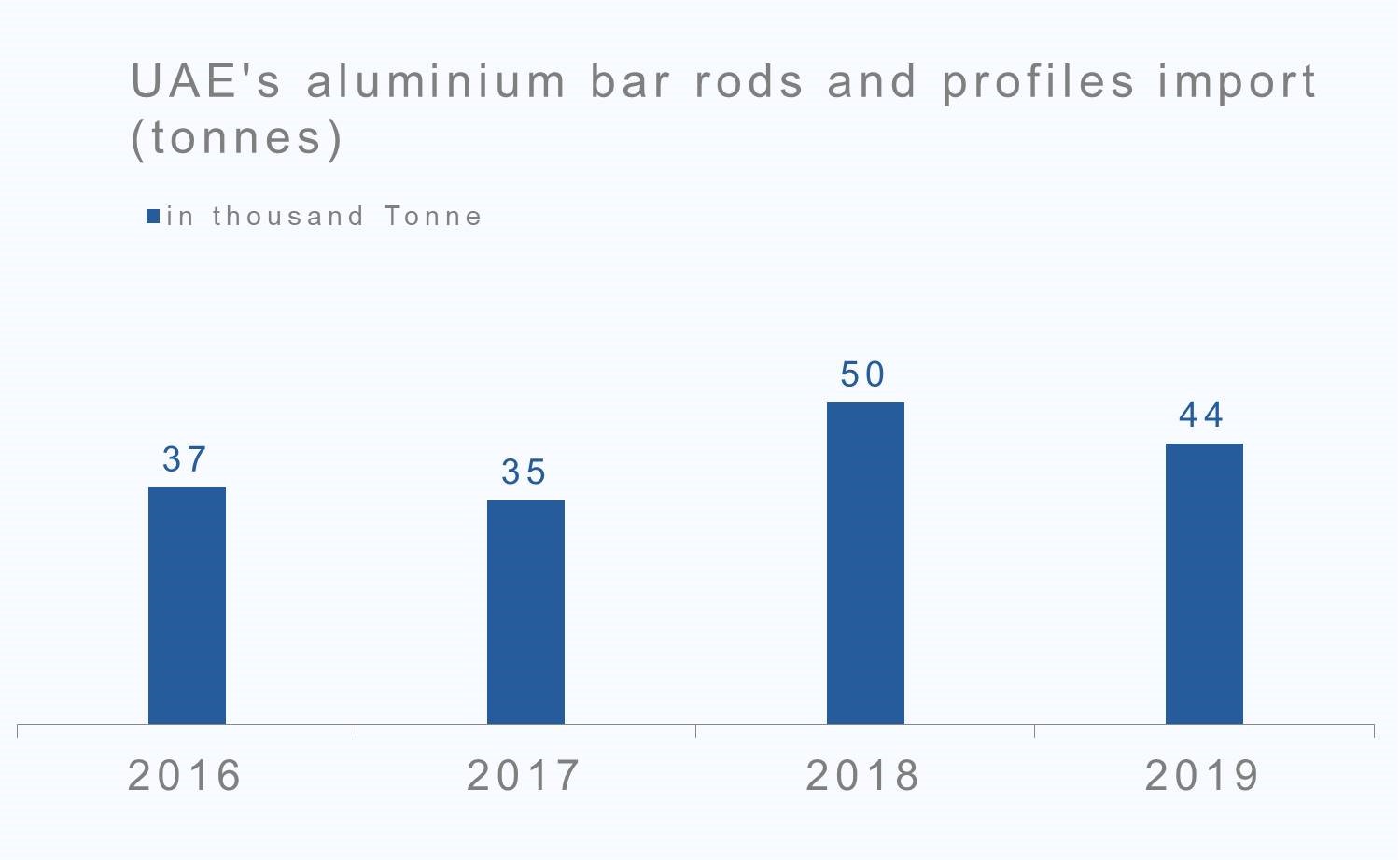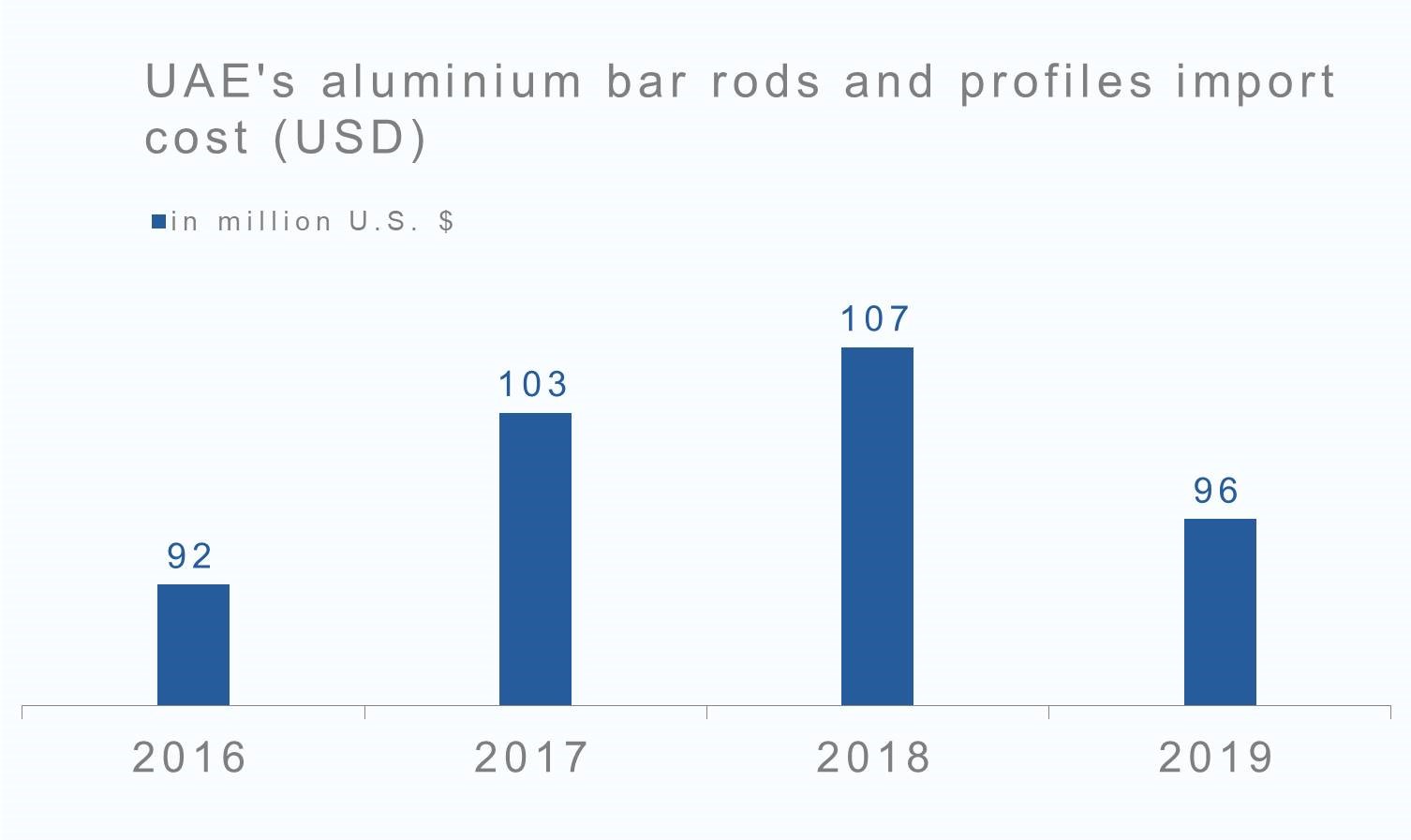

Like many other nations, the United Arab Emirates is increasingly using aluminium semi-finished products in the form of rolls, bars and rods in the building and construction industry. Thanks to the characteristics and properties of aluminium that have led to revolutionary and innovative changes in building techniques and architectural and engineering projects.
In 2018, the United Arab Emirates had imported a significant volume of aluminium bar rods and profiles, amounting to 50,541 tonnes in total. This amount was higher from the previous two years, as in 2016 the country had imported 37,177 tonnes while in 2017 around 35,201 tonnes. This indicates that the import volume in 2018 was 36 per cent up from 2016 and 44 per cent from 2017. However, in 2019, the country’s import amount of aluminium bar rods and profiles is likely to stand down by 13 per cent to 44,169 tonnes compared with the last year, but higher 19 per cent and 25 per cent from that in 2016 and 2017, according to our third-party data.
{alcircleadd}
In tandem with the estimated year-on-year fall in UAE’s aluminium bar rods and profiles import volume in 2019, the import cost is likely to decrease too from US$107 million in 2018 to US$96 million, down 10 per cent. The import cost in 2018 was higher than in 2016 and 2017, along with the rise in import amount. In 2016, UAE’s aluminium bar rods and profiles import cost was at US$92 million while that in 2017 at US$103 million. This indicates that 2018 had seen a rise in UAE’s import cost by 16 per cent from 2016 and 4 per cent from 2017.

According to the available data, Oman is expected to be the leading source of UAE’s aluminium bar rods and profiles in 2019, providing 30,381 tonnes at US$52 million. Saudi Arabia is estimated to be the next, exporting 5,828 tonnes at US$13 million, followed by China 4,027 tonnes at US$11 million.
Responses








